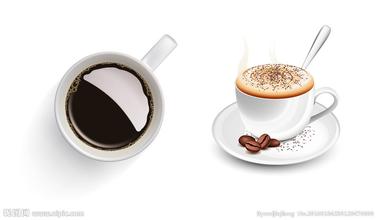Introduction to the growing environment and planting requirements of coffee trees
Growth environment and planting requirements of coffee beans | Natural environment and characteristics of coffee beans suitable for growth
Wen Coffee Sichuan Barista Club.
Certified coffee
Certified organic coffee is grown without synthetic pesticides, herbicides or fertilizers, which helps keep healthy soil and groundwater pure. Coffee beans must also be processed in certified organic factories and baking facilities. Certified organic coffee growers must provide soil test reports for the past three years and annually thereafter to prove that they do use widely accepted organic methods to grow coffee.
Starbucks offers two certified organic coffees: Serena Organic mixed Coffee (Serena Organic Blend) and Mexican Organic Shade grown Coffee (Organic Shade Grown Mexico).
Fair Trade Certified Coffee TM is an integral part of our certified coffee. Purchasing Fairtrade Certified TM Coffee is a way for Starbucks to support small-scale grower cooperatives and is an integral part of the social responsibility of coffee companies.
Starbucks and Fair Trade share a common goal:
Ensure that coffee growers get a fair price for coffee
Strengthen the future development of coffee farms
Starbucks is the largest fair trade certified TM coffee buyer in North America, and our purchases are growing rapidly.
Starbucks will continue to look for premium Fairtrade certified TM coffee to achieve our goal of purchasing 12 million pounds of Fairtrade certified TM coffee in fiscal year 2006
Does Starbucks sell fair trade certification around the world? Coffee
Are we the only ones licensed to sell fair trade certification in 23 countries? A coffee company.
Including: United States, Canada, Germany, Austria, Spain, Switzerland, England, Scotland, Wales, Australia, Japan, South Korea, Malaysia, New Zealand, Philippines, China, Singapore, Taiwan, Thailand, Indonesia, Cyprus, Greece and France
Starbucks purchases Fairtrade certified coffee TM because it benefits small-scale coffee growers in the form of cooperatives. Does Starbucks increase the use of fair trade certification in its business in the following ways? Coffee:
In North America, we focus on launching our new fair trade certification TM Coffee and Cafe Estima every quarter as "recommended Coffee of the week"
Whole bag sales Fair Trade Certification? Coffee beans
Provide more fair trade certification for college customers? The choice of coffee
Work closely with TransFair to promote fair trade certification. Coffee
Used in coffee blending to meet specific taste needs. However, these products cannot be marketed or sold as Fairtrade certified TM coffee, as Fairtrade coffee beans are not 100% used in these mixtures.
Starbucks will continue to explore ways to cooperate with TransFair in the United States and certify fair trade in the following ways. Coffee is included in our activities to purchase coffee in a socially responsible manner:
Strive to find more fair trade certified TM coffee in line with our flavor characteristics to ensure a stable and reliable supply of these coffees
Explore more ways to work with TransFair in the United States to benefit coffee growers, such as helping coffee community residents master basic financial skills
Only fair trade coffee TM can not meet Starbucks' coffee supply demand.
We agree that fair coffee prices should always make coffee growers profitable. But the one-size-fits-all pricing method is not suitable for our business model.
While helping growers to make a profit, we believe that fair prices should be diversified, corresponding to coffee quality, environmental protection and social investment costs, as well as production costs in coffee growing areas.

Important Notice :
前街咖啡 FrontStreet Coffee has moved to new addredd:
FrontStreet Coffee Address: 315,Donghua East Road,GuangZhou
Tel:020 38364473
- Prev

An introduction to the morphological characteristics of coffee trees
Coffee tree is a shrub or small tree of Rubiaceae; leaves opposite, leathery, long ovate; every March, the branches will appear white flowers, petals spirally arranged, the heart of flowers jump around the petals, take a closer look, really like a small windmill playing in childhood, emitting bursts of jasmine fragrance; the fruit is oval, berries, crimson, containing two seeds, that is, we are familiar with coffee
- Next

Planting requirements of Coffee and introduction of Environment, Weather and Climate
Coffee fruit contains two seeds, namely coffee beans. The two beans are connected face to face with each other on one side of the plane. Each coffee bean has a thin outer film, which is called silver skin, and its outer layer is covered with a yellow outer skin, called endocarp. The whole coffee bean is wrapped in a sticky pulp to form coffee pulp, which is soft and sweet.
Related
- Does Rose Summer choose Blue, Green or Red? Detailed explanation of Rose Summer Coffee plots and Classification in Panamanian Jade Manor
- What is the difference between the origin, producing area, processing plant, cooperative and manor of coffee beans?
- How fine does the espresso powder fit? how to grind the espresso?
- Sca coffee roasting degree color card coffee roasting degree 8 roasting color values what do you mean?
- The practice of lattes: how to make lattes at home
- Introduction to Indonesian Fine Coffee beans-- Java Coffee producing area of Indonesian Arabica Coffee
- How much will the flavor of light and medium roasted rose summer be expressed? What baking level is rose summer suitable for?
- Introduction to the characteristics of washing, sun-drying or wet-planing coffee commonly used in Mantenin, Indonesia
- Price characteristics of Arabica Coffee Bean Starbucks introduction to Manning Coffee Bean Taste producing area Variety Manor
- What is the authentic Yega flavor? What are the flavor characteristics of the really excellent Yejasuffi coffee beans?

